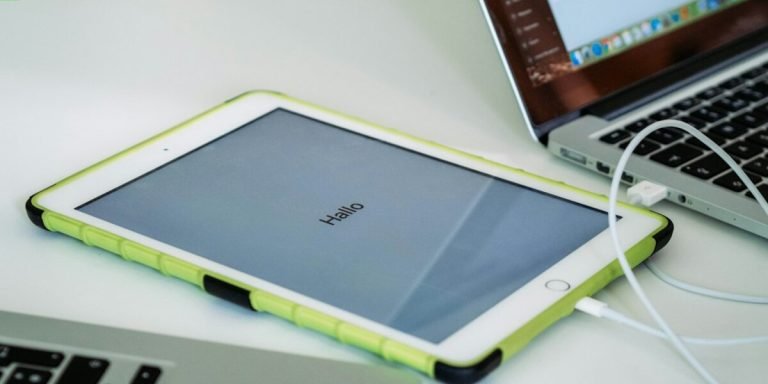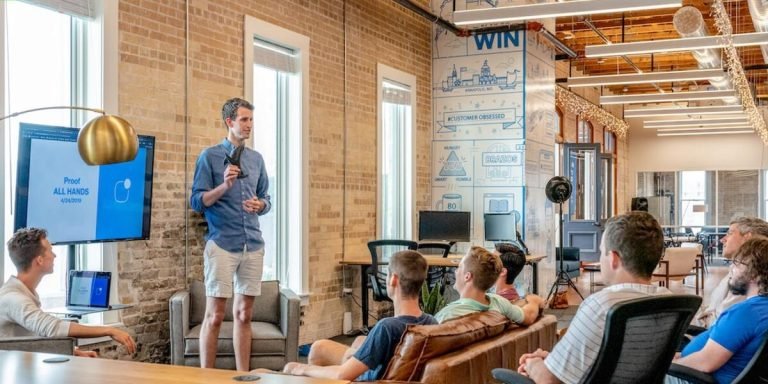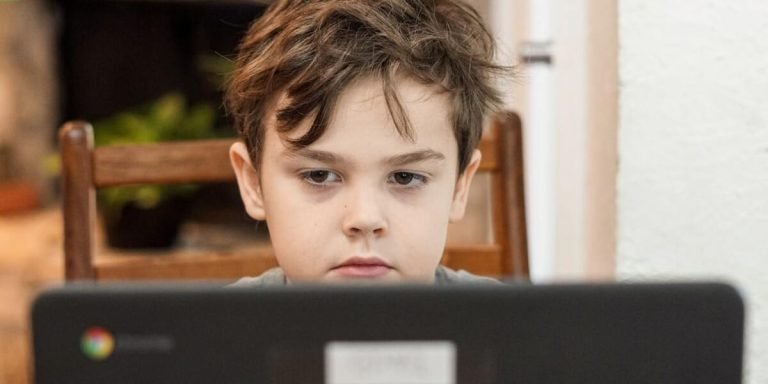Blended Learning Examples: An Insight into Modern Education Techniques
Blended learning examples have become a central part of contemporary education systems worldwide. This powerful strategy combines traditional face-to-face classroom methods with technology-based instruction, providing multiple benefits for both educators and students. The integration of technology in education has revolutionized the teaching-learning process, reshaping how lessons are delivered and information is absorbed.
The constantly evolving nature of this method offers an innovative approach to ensure educational objectives are met effectively. Blended learning takes into account individual differences by offering flexibility far beyond what is typically available through conventional teaching practices alone. As we delve deeper into discussing various blended-learning examples, it becomes evident that integrating technology in the classroom enhances student engagement while promoting personalized learning experiences.
Did you know?
Did you know that according to the U.S. Department of Education, students who engaged in blended learning performed better academically than those relying solely on traditional classroom teaching? The blend of digital and physical instruction methods promotes a personalized and flexible learning environment!
The Role of Technology in Facilitating Blended Learning
As we delve deeper into the 21rst century, technology continues to play an exceedingly significant role in shaping education and facilitating blended learning. Blended learning, a term that marries traditional face-to-face teaching methods with online digital media enhances student-teacher interaction by offering flexible time management amongst other benefits.
Incorporating tech-driven tools such as virtual classrooms, interactive software applications or even simple e-books have not only made lessons more engaging but also allow students access to their educational resources anytime and anywhere. These examples of technological integration are bringing about radical changes in how educators approach teaching strategies nowadays.
Moreover, this blend caters to individual learner’s needs by providing differentiated instruction through adaptive content delivery platforms. In essence, it creates a personalized study plan for each student based on their strengths and weaknesses which boosts academic achievement levels drastically. Technology has hence revolutionized the idea of classroom dynamics where teachers now act less like knowledge providers while embodying roles that guide learners towards autonomous self-study paths.
Implementing E-Learning Platforms as a Blend with Traditional Classrooms
As we dive deeper into the era of digital transformation, implementing e-learning platforms as a blend with traditional classrooms becomes increasingly critical. Blended learning examples showcase this dynamic change within education.
The first step towards integrating technology is acknowledging its multifaceted role in transforming traditional educational methods. By blending online instructional materials and opportunities for interaction online with conventional place-based classroom methods, learners get the best of both worlds.
E-Learning platforms allow students to learn at their own pace which can be an excellent complement to structured classroom teachings. This flexibility enhances not only information retention but also promotes self-directed learning skills among youngsters which are essential life skills in our fast-changing world.
Moreover, incorporating such interactive technologies fosters engagement even outside school hours, essentially creating a ‘classroom without walls’. Learning no longer remains confined to specific times or physical geography – an example could be accessing informative videos or engaging academic games on laptops after school hours that reinforce topics taught earlier during face-to-face lessons.
Through these blended learning approaches teachers can personalize instructions based on each student’s strengths and weaknesses – whether it’s offering more challenging problems or providing support where needed- all thanks to data tracking capabilities of many e-learning software available today.
Leveraging Interactive Multimedia for Enhanced Student Engagement
In contemporary times, technology is no longer just a tool to simplify complex processes but also an amazingly powerful aid in the field of education. As we explore blended learning examples, it becomes increasingly evident that interactive multimedia resources have emerged as game-changers when it comes to enhancing student engagement.
Interactive multimedia platforms offer students vibrant audio-visual content with exciting colours and animations which make learning fun and engaging. They can watch videos on specific topics or get involved in virtual lab experiences where they create their own scientific experiments.
Notably, the vital role played by online educational games and quizzes cannot be overstated. These innovative tools require active participation from students while promoting critical thinking skills—both essential components for effective knowledge retention.
Artificial Intelligence (AI) is another breakthrough technological innovation shaping up blended-learning scenarios across schools worldwide today – 2023 being no exception.”Smart” software applications are now adept at gauging each learner’s pace and style of acquiring information, making personalised education plans feasible like never before!
Assessing the Impact of Blended Learning Models on Academic Performance
The synergy between traditional classroom instruction and online learning forms the cornerstone of blended learning models, an innovative approach that’s transforming academic performance. When used effectively, these models offer a wide spectrum of benefits for students – enhancing engagement levels, catering to different styles of learning, and ultimately bolstering success in academics.
We’re living in 2023; technology is no longer merely supplementary to education – it has become integral. The evolution from blackboards to digital whiteboards symbolizes this transition well. However the real game-changer lies in how we blend these technological tools into our teaching methodologies.
For instance, using interactive videos or virtual simulations can take theoretical concepts off textbook pages making them much more digestible for young minds.
Evaluating the impact requires understanding various examples where blended learning methods have brought significant improvements in academic performance across all childhood education stages—whether it be kindergarten kids embracing their ABCs through fun educational apps on tablets or college undergraduates delving deep into complex scientific phenomena using VR-based modules.
Quantitative Improvements: Statistics and Case Studies
In recent years, the integration of technology in education has given rise to various blended learning models. These innovative approaches mix traditional classroom techniques with digital mediums, aiming for an effective combination that enhances academic performance. This section discusses quantifiable improvements observed due to these practices, focusing on real-life blended learning examples.
One significant metric worth noting is student engagement levels post-blended learning implementation. According to a 2022 study by Johnson & Wales University, students participating in courses utilizing a hybrid model showed increased involvement than those taught through conventional methods alone. Improved interaction often leads directly to higher grades and better comprehension – testaments of efficient teaching.
Moreover, teachers also noticed they could track individual progress more accurately when integrating technology into their classrooms following E-learning Industry’s report published last year (i.e., 2023). Automated systems keep comprehensive records about each learner’s pace and areas needing improvement – vital data for formulating personalized instruction strategies based on specific needs and weaknesses.
Another example can be seen at Clayton Christensen Institute where dual-mode models were implemented across middle-schools during the previous academic year (i.e., 2023), clearly portraying improved aggregate scores compared against schools using only either traditional or online methodology exclusively.
The global shift towards remote working culture influenced education as well; research from Harvard Business Review (HBR) suggests that incorporating telecommunication tools favorably affects distance learners’ motivation levels while increasing overall satisfaction rates simultaneously along with course completion percentages too!
Qualitative Benefits: Student Feedback and Teacher Observations
As we dive deeper into the impact of blended learning models on academic performance, it’s critical not to overlook the qualitative benefits. A crucial area where these become evident is through student feedback and teacher observations – two strikingly insightful sources when evaluating the efficacy of integrating technology in education.
Students who are exposed to blended learning examples often report enhanced levels of engagement and motivation. For modern-day students growing up amidst rapid technological advancement, blending traditional classroom instruction with digital elements holds a certain appeal. It offers varying formats for acquiring knowledge that caters to their comfort zones even as they navigate 2023’s complex educational landscape.
Moreover, this teaching model allows scope for personalised instruction tailored according to individual learner needs – something much appreciated by students today. By leveraging online platforms alongside regular textbook-based lessons in classrooms or homes, students can learn at their own pace while having ready access to immediate support from teachers when needed – an attribute greatly upheld by them during feedback sessions.
Apart from being user-friendly and creating multiple avenues for learners’ progress tracking via applications or portals involved; such integration also fosters independent thinking skills among children enabling them with future-ready skillset essential in thriving tomorrow’s world–an aspect specifically highlighted post-pandemic within numerous student testimonials worldwide as witnessed across various researches conducted over recent years.
Innovative Approaches to Integrating Tech into Educational Curricula
In a rapidly changing technology landscape, innovative approaches to integrating tech into educational curricula have become more important than ever. One such approach is Blended Learning – an instructional methodology that combines traditional classroom teaching with digital tools. The benefits of blending online and offline learning are manifold: it affords greater flexibility in pacing and accessibility, fosters student-centered instruction, caters for individualized learning needs and promotes higher-order thinking skills.
To illustrate how blended learning can transform the education sphere using real-life examples accessible this 2023 year, consider Flint Elementary School’s recent switch from pure face-to-face instructions to hybrid ones. Teachers now employ interactive whiteboards during physical classes while students complete assignments on cloud-based platforms at home. This way the transition between schoolwork and homework becomes seamless; educators also find it easier tracking each pupil’s progress by monitoring their engagement in real-time web activities.
Game-Based Learning Scenarios Encouraging Critical Thinking Skills
In the current educational landscape, technology has become an integral game-changer. One innovative approach that stands out in engaging students is through “Game-Based Learning Scenarios.” A stellar example of blended learning examples, this method brings together technologically advanced games and traditional teaching methods to boost critical thinking skills.
The significant advantage of these scenarios lies in their unique ability to mesh education with entertainment. Young students tend to learn more effectively when they find enjoyment in their studies – a principle called ‘edutainment’. This approach helps them delve deeper into complex topics without even realizing it as they’re too busy having fun solving problems or tackling challenges within the games.
Moreover, Game-based learning cultivates decision-making abilities among learners. Each step taken by players requires strategic planning and forecasting based on available resources which are qualities essential for real-world problem-solving situations too.
For instance, popular educational games like Minecraft: Education Edition provide immersive lessons across subjects ranging from math and science to history and language arts making use of interactive 3D blocks environments where children can experiment freely while employing creative problem-solving strategies simultaneously reinforcing academic content knowledge.
Virtual Reality Simulations for Immersive Subject Comprehension
Virtual Reality (VR) has revolutionized numerous industries and education is not an exception. VR simulations provide one of the most effective blended learning examples, offering interactive 3D environments that can significantly enhance subject comprehension in a way traditional textbooks simply cannot.
Many educators have discovered the benefits of integrating technology into their curricula through this immersive teaching method. Students are more motivated to learn as they interact with virtual objects and experience scenarios first-hand instead of merely reading about them – bringing educational content to life while promoting deeper understanding.
One area where this approach shines is during science lessons. For instance, students could take a virtual trip inside the human body or across galaxies far away from Earth right from their classroom seats. This application creates personalized experiential learning moments that both educate and engage student interest making it no surprise why many see VR as an integral part in future classrooms.
Moreover, these simulations also foster collaborative skills among children who work together on tasks within shared digital spaces – teamwork being an essential skill for success beyond school boundaries.
Let’s explore some concrete ways teachers are using virtual reality tools:
Conclusion
In conclusion, the blended learning examples we’ve discussed are not just innovative methods of teaching; they’re paving the path for future education systems. They foster individual progress and encourage a love for self-guided study amongst youngsters. Our fast-paced society calls for modern techniques like these to keep up with changing times and technologies.
Now that you have insight into some effective strategies of modern-day pedagogy, it’s time you incorporated them in your educational tool kit too! Keep exploring our website where we regularly provide useful information on child-friendly education resources and tips to bolster parent-educator support systems. You never know what brilliant piece of advice might be waiting around the corner!







